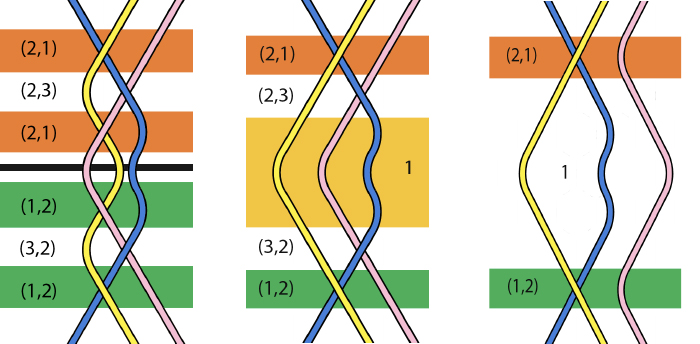Chapter 1: Braids
Is the ability to braid the thing that distinguishes humans from other animals? Of course some people think it is the opposable thumbs (useful in braiding) and others point to the ability to build aircraft carriers (not really a thing about a single human). Ideally, what you are looking for in this game is something simple but important that other animals might conceivably do, but don’t.
We seem almost built for braiding. Watch how fast and easily someone who is good at it can do it. It seems almost mystical, as if driven by some unseen force. Deft fingers and an algorithmic mind, isn’t that the best of us?
The two hands seem perfect for the common braid — three strands — left over middle, right over middle, left over middle, and so on. With a little practice the fingers seem to move on their own, independently yet in concert, passing strands from fingertip to fingertip without conscious thought or direction. The braid is the easiest way to make long strings out of shorter ones — when one strand runs out, simply lay another on top of it, overlapping a bit so that the two of them pass over and under together a few times. In this way a very strong string or rope can be made from hair or fibrous plants. A strong string is a tremendous adaptive advantage. Think of building, lashing poles together, making clothes and footwear, hunting, trapping, fishing, and so on, all made possible or easier with string. Is there another evolutionary explanation for the long hair most of us have at one time or another on top of our heads?
There are many different braiding patterns, and they can be described quite elegantly by listing the individual moves that result in the braid. Combining these moves can be thought of as a product — doing one move then the next is a kind of multiplication. So In a braid product we make one braiding move, and then another (then perhaps another and another…).
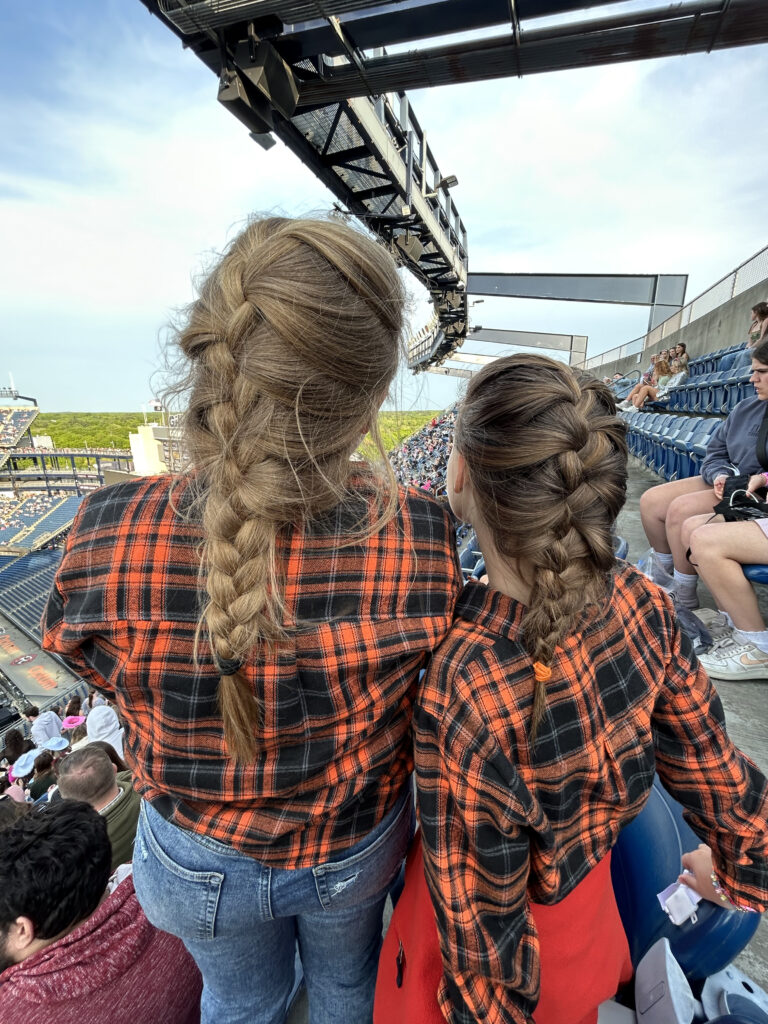
To code the braid, we think of positions for the strands. If there are two strands, there is position 1 and position 2, reading left to right as we look at them. This is the important part of the code: the strands will change positions as we braid. So the code is about positions, not particular strands. For example, consider this simple braid move. The strand on the left has moved to the right, it was originally strand 1, but after the move is strand 2. The strand on the right moves to the left and becomes strand 1. and the right has moved to the left. In this move, the strand originally in position 1 passes over the strand originally in position 2, so we will denote it (1,2).

We could also cross strand 2 over strand 1.

We can take the product of a move with itself, this means we do the same move twice in a row. This is pictured below. Note that the yellow strand begins in position 1 and moves to position 2 in the first move. The next move is the same move — pass whatever strand is in position 1 over the strand currently in position 2 — and moves the yellow strand back to position 1. The code for this product of moves is (2,1)(2,1).
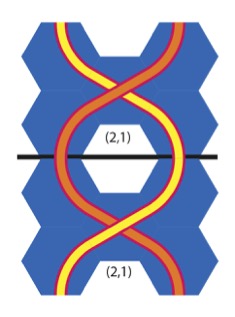
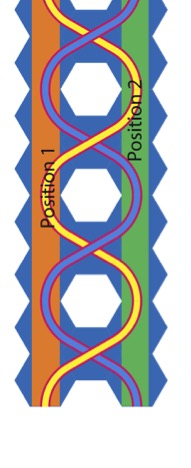
If we do this move several times, we create a left-handed twist. The code is
(2,1)(2,1)(2,1)(2,1)….
If instead we repeatedly pass position 1 strand over the strand in position 2, we have the code
(1,2)(1,2)(1,2)(1,2)…
and we create a right-handed twist.

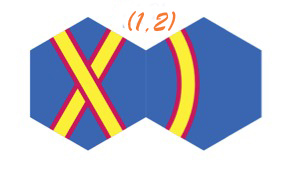
Here are pictured moves on three strands. The first passes the first strand over the second, so the code is (1,2). The second passes the third strand over the second, so is (3,2). If we take a repeated product of these two moves, we get the familiar three strand braid. We also show this braid with three strands of different colors, to remind us that particular strands are not numbered, their positions at a particular stage in the braid are.


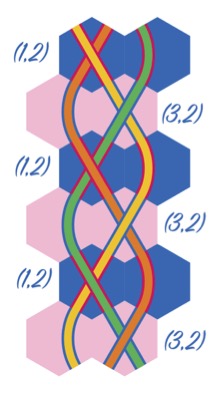
In general, with this code system we only allow one crossing at any stage, and each move only crosses two strands that are next to one another. So if we wish to pass a strand over two others, this takes two moves. To the right is pictured a four strand braid. The code is (2,3)(4,3)(2,3)(2,1)(2,3)(4,3)(2,3)(2,1)….
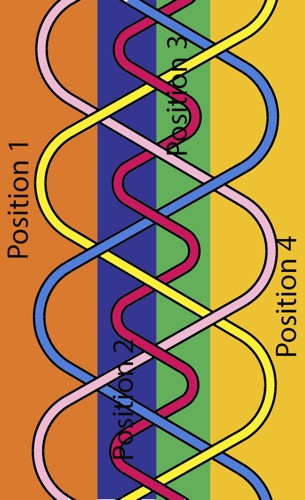
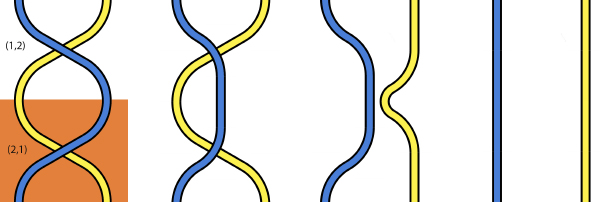
Braids have inverses. That is, after we make a braid by doing a sequence of moves, we can then do another sequence that will undo the braid. We can see an example of this with a move on two strands — the move (2,1) undoes the move (1,2). So the product (1,2)(2,1) is topologically equivalent to two uncrossed strands. The sequence to the left shows the strands being straightened out. We can call the pattern of uncrossed strands just 1, or the identity, so we have the equation
(1,2)(2,1)=1.
Next is an inverse example for three strands. The equation is
(1,2)(3,2)(1,2)(2,1)(2,3)(2,1)=1.
And we can see that (1,2)(3,2)(1,2) and (2,1)(2,3)(2,1) are inverses of one another — when we do one then the other the result can be combed out, giving us no braid at all.
